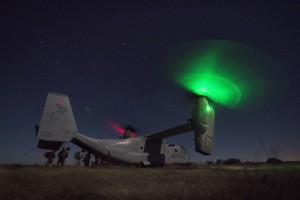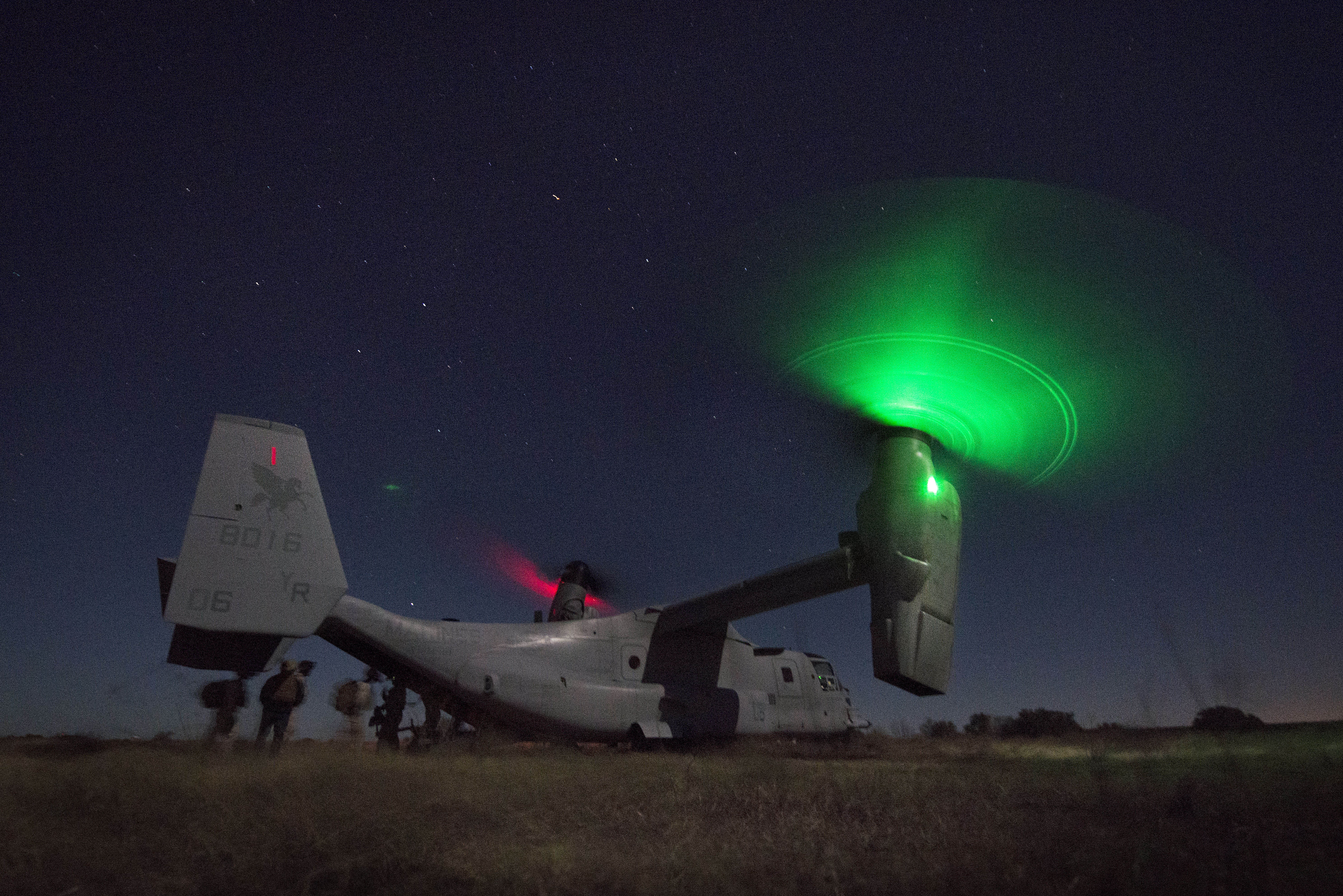2014-04-08 The impact of the speed and range of the Osprey is driving an opportunity to add speed and effectiveness for situational decision makers in the ground combat element flying aboard the Osprey as well.
As Col. Mike Orr, the CO of VMX-22, explained in an earlier interview:
It is not just about adding new platforms and doing older tasks better.
It is about rethinking how we do operations in 21st century conditions.
We are working on the creation of aviation enabled networks provided by a group of platforms able to perform a wide range of missions and to be provide the situational awareness to allow the MAGTF to function more effectively and efficiently into the 21st century.
The approach is to work the relationships among the new aviation platforms to deliver capabilities to the MAGTF to, as Orr put it, “build the operations space for the commander.”
A key driver for change has clearly been the Osprey, which has forced the USMC to think beyond the horizon of classic helicopter operations. Helos are slower moving, not capable of great range of operations and require an infrastructure of support on the ground to execute many of their missions.
With the Osprey’s greater range and speed and ability to be refueled in flight, the ground combat element can operate over much greater distances.
For example, in the recent SP-MAGTF CR operation in South Sudan, the unit moved from Spain to South Sudan.
160 Marines and Sailors from the Special Force Marine Air Ground Task Force Crisis Response could be flown by 2 KC-130s Hercules and 4 MV-22B Ospreys from Spain where they are temporarily based to Djibouti and then Uganda.
With 3,400 nautical miles (a distance equivalent from Anchorage to Miami), this was the longest range insert ever performed by this force thanks to its self-deployable capability.

Thinking outside of the helo defined operational box is a key game changer in thinking about the future of the MAGTF.
During the earlier interview, Orr discussed the recent experiments in C2 support for a long-range raid, in UAV developments, and shaping a new working relationship between electronic warfare and cyber approaches.
The long-range raid in December 2013, the Marines worked on mission planning on the fly.
Although the Osprey is a tilt-rotor aircraft, its heart and sole is in supporting the Ground Combat Element (GCE) differently than any airborne capability seen before.
The Marines work the relationship between the GCE and the Air Combat Element (ACE) to shape a capability, which is expeditionary, flexible, and with the Osprey more rapid with greater range for force insertion than before.
But to get to the next phase requires further innovation, this time in terms of how the MAGTF (GCE and ACE) can better use the new emerging capabilities, specifically C3I and fires, to execute its mission more effectively.
The Osprey and KC130J pairing provides an ability to operate at distance and to rethink various missions such as force insertion, extraction of embassy personnel, TRAP and others, to include limited objective MAGTF strike operations.
By not being a relatively slow-moving helicopter that typically requires forward operating bases to conduct long-range operations, the Osprey allows the USMC (and the USAF) to think about how to use the speed and range of the Osprey when paired with organic tanking capabilities to operate fundamentally different from past approaches.
Over the past year, during three separate, long-range, Marine Air-Ground exercises, the Marine Infantry Officer Course (IOC) has worked closely with multiple aviation units to attack this required culture change.
During these experiments, the combined air-ground team has sought different approaches to achieve more effective outcomes, and have used these exercises as means to shape future technological adaptations.
A recent example of this approach was seen in a long-range Non-Combatant Evacuation Operation (NEO) that IOC, serving as a simulated Company Landing Team(CLT), executed into a semi-permissive environment from 29Palms to Fort Hood Texas.
The exercise was called TALON REACH and was the culminating event for IOC Class 1-14. This event was conducted under one period of darkness between 29 Palms California and Ft Hood Texas.
According to Orr, VMX-22 provided two Ospreys, which provided the airborne C2 network to enable a new approach to planning aboard the aircraft for the GCE.
He emphasized: “we currently have C2 links to support the MAGTF at the Combined Operations Center. What we’re doing with new technologies is to push C2 to the lowest appropriate tactical level to enable the CLT commanders to be able to have the situational awareness and intelligence to make better and more effective combat decisions.”
During the exercise, the Harriers provided through their FLIR systems the video, which flowed into the back of the Ospreys and appeared on the tablets used by the assault force commanders.
“We can use either manned or unmanned systems for this role, but the core point is flowing the information to the embarked commander.”
In effect, a key aspect of the change with the new technologies, which will be accelerated with the arrival of the F-35B, is the key role of situational decision making at the appropriate level and not just situational awareness sent BACK to a central command.
It is about empowering new concepts of distributed operations based on new approaches to connectivity.
https://sldinfo.com/thinking-beyond-the-osprey-magtf-innovation-and-coalition-capabilities/
MAWTS-1 produced the video seen above.


